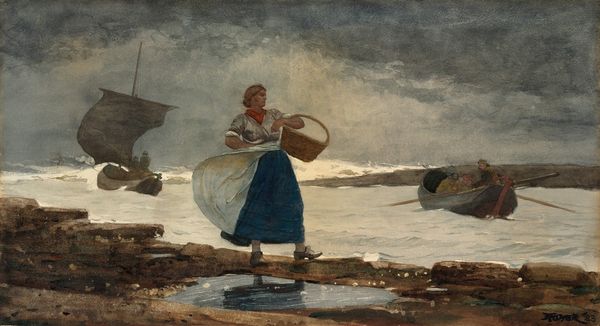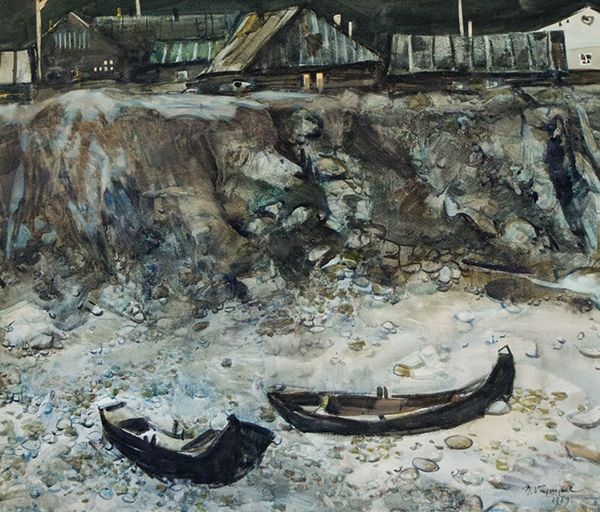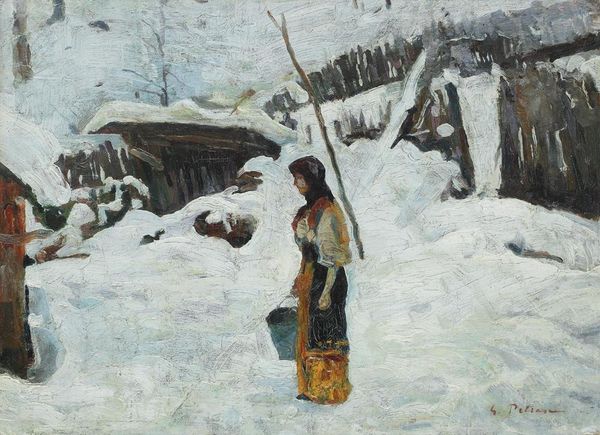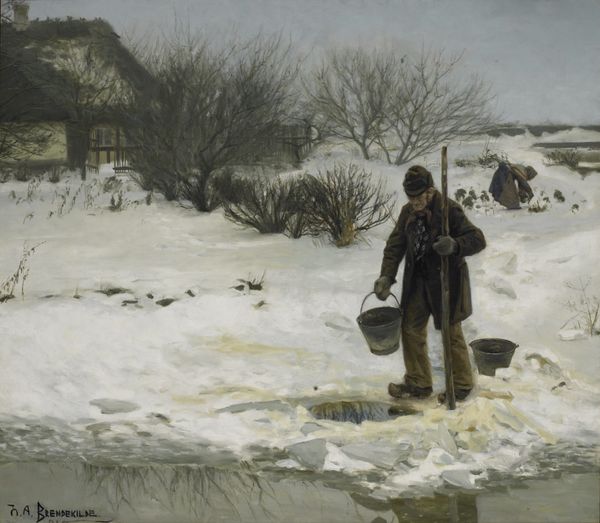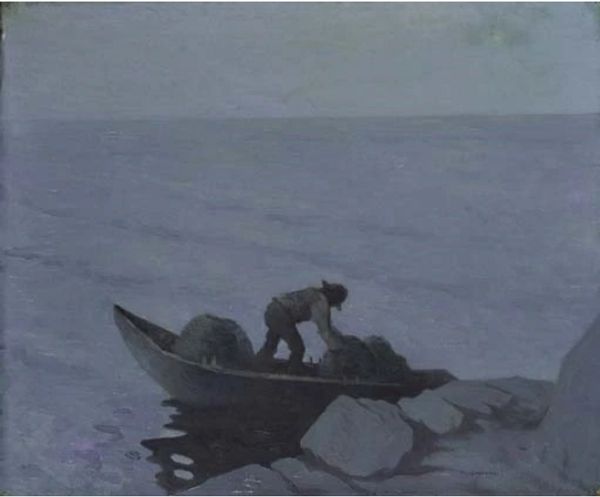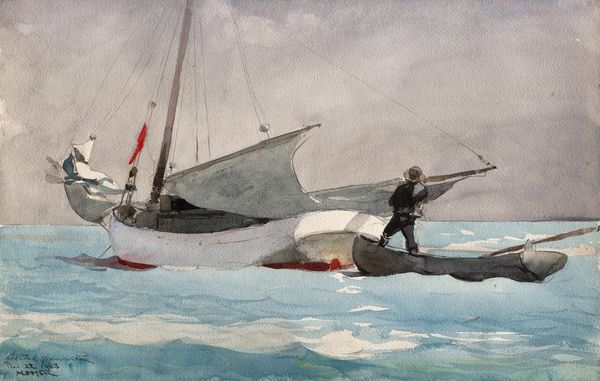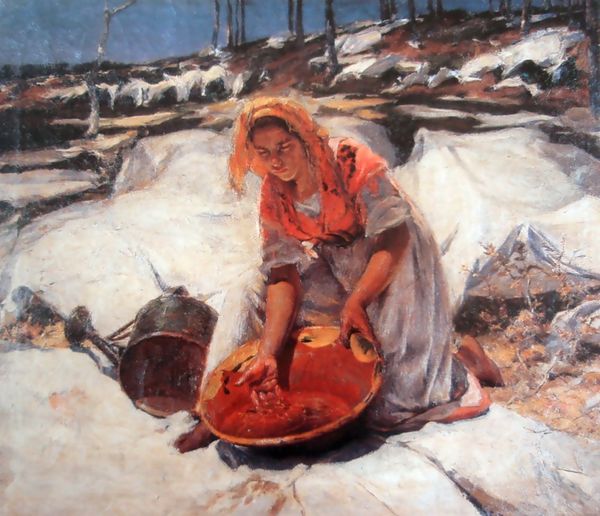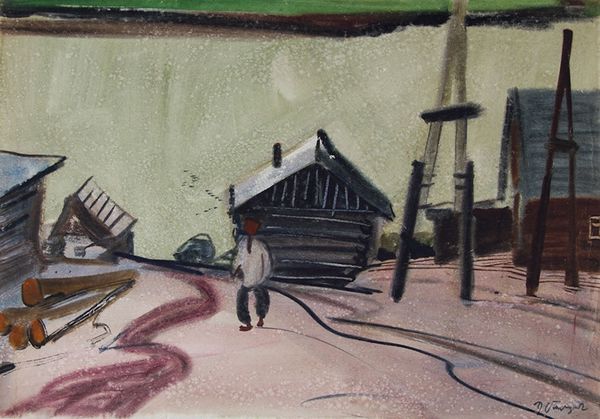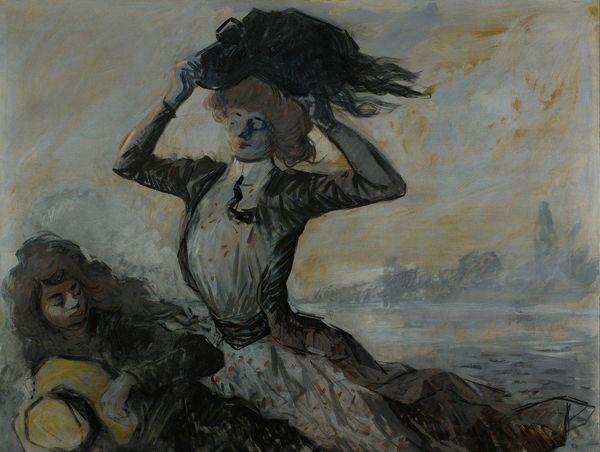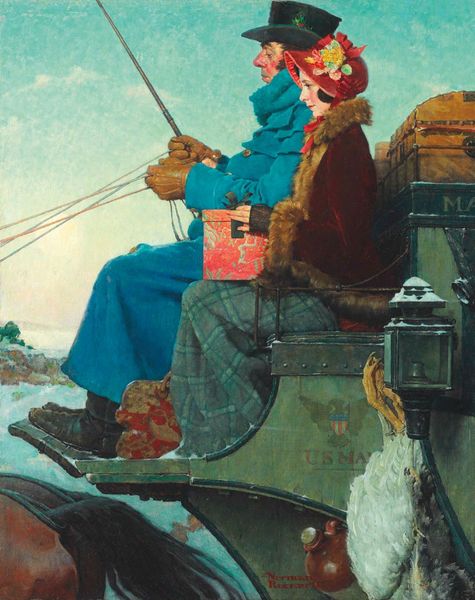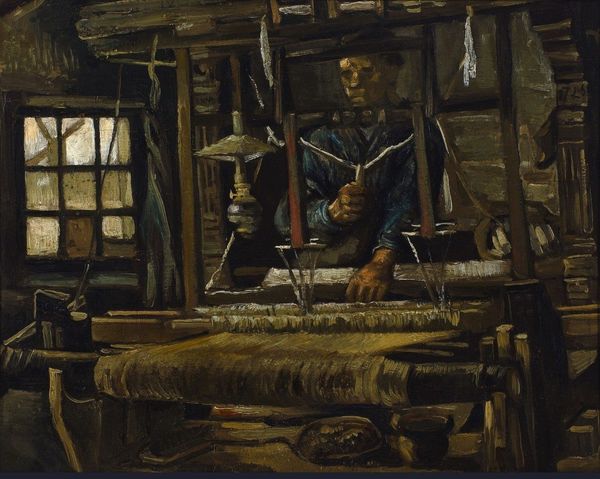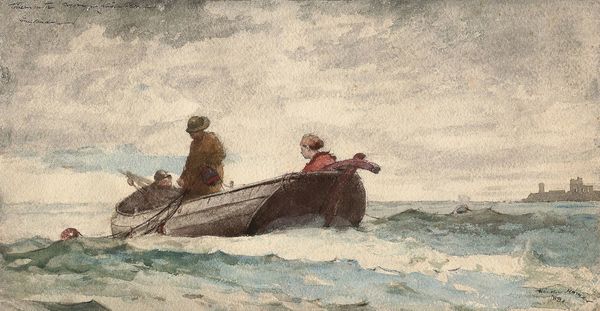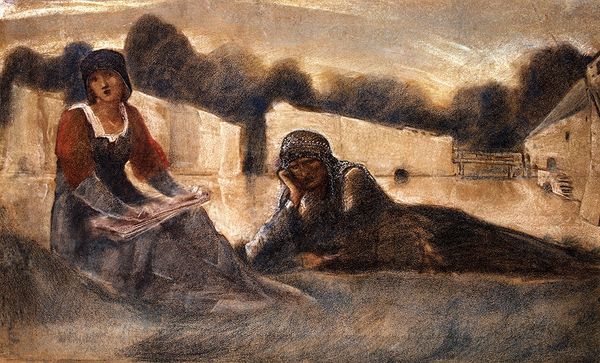
#
portrait
#
landscape
#
soviet-nonconformist-art
#
figuration
#
portrait art
#
watercolor
#
realism
Copyright: Petros Malayan,Fair Use
Curator: Petros Malayan's 1967 watercolor, "Yenisey. Tuva. Tora Xema," offers a glimpse into a specific place and time. What are your first impressions? Editor: It's stark. There's an undeniable bleakness, a working-class toughness in the figure's posture. The monochromatic palette emphasizes a kind of utilitarian existence; there is little to no colour and it enhances the difficult working conditions. Curator: Exactly. The materiality of watercolor, its inherent fluidity and transparency, becomes fascinating when used to depict such a harsh landscape and labor. Consider how the medium itself shapes our understanding of the Soviet-era focus on industry and collective effort. The institutional support for realism meant images like these were widely disseminated, shaping a particular view of rural life. Editor: Right, there's that inherent tension between the reality of hard labour and the state-sponsored romanticism of it. The pose, the way she looks down her nose: the figure doesn't smile for propaganda purposes. Is it realism, or commentary? What could someone reading the scene back then think about this piece in the USSR? Curator: It's complex, the boats in the back are a production factor but they’re out of service! There's an emphasis on labor, particularly the manual aspect – evident in the baskets overflowing with fish, the aprons, and headscarves that signify a specific social role. Editor: Let's also consider where such a painting might have been exhibited, the context of galleries within the Soviet system. How did this portrayal reinforce or challenge the dominant narrative? It invites speculation, this somber scene does. Curator: I agree. Malayan uses watercolor in an unusual way here, prioritizing documentation of working environments and social reality rather than adhering to conventional painting aesthetics. Editor: Ultimately, Malayan's image forces us to think about the human element, the often-unseen individuals propping up industrial progress and the very tangible costs of their labour. Curator: It highlights a crucial dialogue around how we see value in labour and also a way of how people see other realities of work than us, what is behind a single working woman for her own sustenance.
Comments
No comments
Be the first to comment and join the conversation on the ultimate creative platform.
